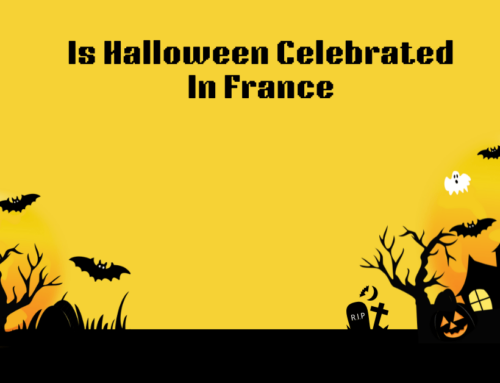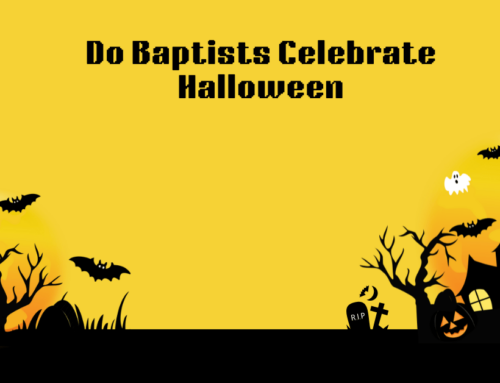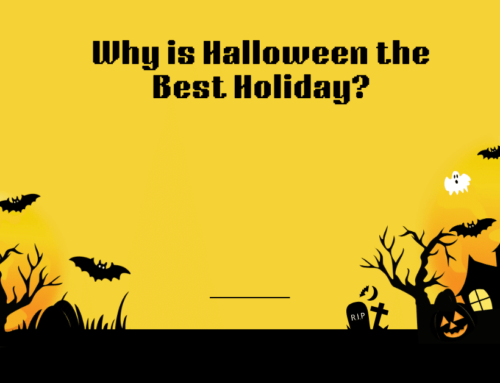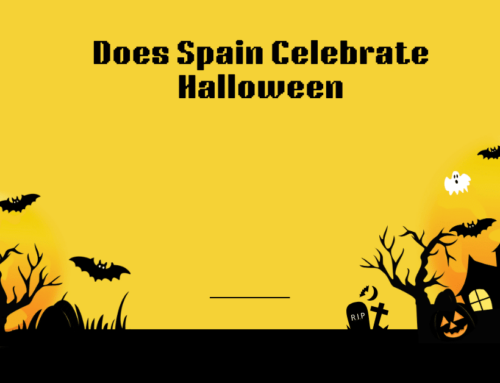The excitement for Halloween builds as the crisp autumn air settles in and leaves begin to turn.
At the heart of this spooky celebration lies a fascination with the macabre, and nothing embodies this more than the array of monsters that have become synonymous with the holiday. From ancient folklore to modern pop culture, Halloween monsters have captivated our imaginations for generations.
In this comprehensive guide, we’ll explore the vast world of Halloween creatures, delving into their origins, cultural significance, and enduring appeal.
Origins of Halloween and Its Monstrous Connection
Halloween, as we know it today, has its roots in the ancient Celtic festival of Samhain. This celebration marked the end of the harvest season and the beginning of winter when the veil between the world of the living and the dead was believed to be at its thinnest. People would light bonfires and wear costumes to ward off ghosts and other supernatural beings that might cross over.
As centuries passed and cultures merged, this tradition evolved into the Halloween we celebrate today. The monsters associated with the holiday have become an integral part of its identity, representing our deepest fears and fascinations with the unknown.
Classic Halloween Monsters
Several iconic creatures immediately come to mind when we think of Halloween monsters. These classic monsters have stood the test of time, appearing in countless stories, films, and Halloween decorations.
Vampires
Vampires, the immortal blooddrinkers, have been a staple of horror literature and film for centuries. The modern concept of the vampire was largely shaped by Bram Stoker’s 1897 novel “Dracula,” which introduced many of the traits we associate with vampires today:
- Pale skin and fangs
- Aversion to sunlight and garlic
- The ability to transform into a bat
- Immortality through drinking human blood
Vampires continue to captivate audiences, and their portrayal in contemporary media has evolved from terrifying monsters to complex, often romantic figures.

Werewolves
The legend of humans transforming into wolves under the full moon has ancient roots and appears in folklore from various cultures. Werewolves embody the struggle between human consciousness and primal instincts. Key characteristics of werewolves include:
- Transformation triggered by the full moon
- Superhuman strength and speed
- Vulnerability to Silver
- The curse often spreads through a bite
The werewolf’s dual nature makes it a compelling and sympathetic monster, explored in numerous films and novels.
Zombies
While zombies have roots in Haitian folklore, the modern zombie as we know it was largely defined by George A. Romero’s 1968 film “Night of the Living Dead.” These undead creatures have become a metaphor for societal fears and mindless consumerism. Typical zombie traits include:
- Reanimated corpses with a hunger for human flesh
- Slow, shuffling movement (though some modern interpretations feature fast zombies)
- Spread of the condition through bites or other forms of infection
- Limited cognitive abilities
Zombies have experienced a significant resurgence in popularity in recent years, and they have been featured in numerous movies, TV shows, and video games.
Ghosts
Perhaps the most ubiquitous of all Halloween monsters, ghosts represent the enduring human fascination with what happens after death. Ghost stories can be found in virtually every culture around the world. Common ghost characteristics include:
- Incorporeal form, often translucent or glowing
- Ability to pass through solid objects
- Tied to a specific location or object
- Often seeking to resolve unfinished business from their mortal life
Ghosts can range from benign spirits to terrifying poltergeists, making them versatile figures in horror and supernatural fiction.

Witches
While the perception of witches has evolved significantly, they remain central in Halloween iconography. The stereotypical Halloween witch, with her pointed hat and broomstick, has roots in medieval European witch hunts and subsequent folklore. Modern portrayals of witches vary widely, from evil sorceresses to benevolent practitioners of nature-based religions.
Iconic Movie Monsters
Hollywood has significantly shaped our perception of monsters, creating enduring characters that have become Halloween staples.
Frankenstein’s Monster
Mary Shelley’s 1818 novel Frankenstein introduced one of the most iconic monsters in literature and film. The Creature, often mistakenly called Frankenstein (which is actually the name of its creator), represents the dangers of unchecked scientific ambition. Boris Karloff’s portrayal of the monster in the 1931 film adaptation largely established the classic depiction of the monster, with a square head, bolts in the neck, and a lumbering gait.
The Mummy
Inspired by the public fascination with ancient Egypt in the early 20th century, the mummy became a staple of horror films. The 1932 film “The Mummy” starring Boris Karloff established many of the tropes associated with this monster, including:
- Ancient Egyptian curse
- Bandage-wrapped appearance
- Supernatural powers
- Quest for lost love
The mummy has since appeared in numerous films, ranging from horror to action-adventure.
Dracula
While vampires existed in folklore long before, Bram Stoker’s creation of Count Dracula became the definitive vampire character. Bela Lugosi’s portrayal in the 1931 film adaptation cemented the image of Dracula as a sophisticated, charismatic villain, influencing countless vampire stories.

Creature from the Black Lagoon
This amphibious humanoid, introduced in the 1954 film of the same name, represents a different kind of monster born from nature rather than supernatural forces. The Creature’s design, blending fish and human features, has made it an enduring icon of classic monster movies.
Folklore and Mythological Creatures
Many Halloween monsters have their roots in ancient myths and legends from around the world. These creatures often reflect the fears and beliefs of the cultures that created them.
Banshees
In Irish folklore, the banshee is a female spirit whose wailing heralds an impending death in a family. Often depicted as a woman with long, flowing hair, the banshee represents the thin line between the world of the living and the dead.
Goblins and Gremlins
These mischievous creatures appear in various forms across different cultures. Generally small in stature, goblins and gremlins are known for causing trouble and minor disasters. During World War II, aircraft failures were often jokingly attributed to gremlins, leading to their popularity in modern folklore.
Headless Horseman
Made famous by Washington Irving’s “The Legend of Sleepy Hollow,” the Headless Horseman is a spectral figure who is said to ride at night in search of his lost head. This character blends elements of European folklore with American colonial history.
Chupacabra
A more modern addition to monster lore, the chupacabra (Spanish for “goat-sucker”), emerged from Puerto Rican folklore in the 1990s. Described as a reptile-like creature that attacks and drains the blood of livestock, the chupacabra has become a prominent figure in cryptozoology and popular culture.
Modern Pop Culture Monsters
As our fears and societal concerns evolve, so do the monsters that populate our stories. In recent years, new creatures have emerged that reflect contemporary anxieties.
Slender Man
Born from an internet forum in 2009, Slender Man quickly became a viral sensation. This tall, faceless figure in a suit, often depicted with tentacle-like appendages, represents modern fears of the unknown and the dark side of technology and information sharing.

The Demogorgon (Stranger Things)
The popular Netflix series “Stranger Things” introduced the Demogorgon, a predatory creature from an alternate dimension. Its flower-like head and ability to move between dimensions have made it a memorable modern monster, blending sci-fi and horror elements.
Pennywise the Clown (IT)
While evil clowns have been a part of horror for decades, Stephen King’s Pennywise, particularly as portrayed in recent film adaptations, has become a defining monster of the 21st century. Pennywise plays on coulrophobia (the fear of clowns) and represents a corruption of childhood innocence.
The Babadook
The titular monster from the 2014 Australian film “The Babadook” has become an iconic figure in modern horror. Resembling a tall, shadowy man with a top hat, the Babadook represents grief, depression, and the struggles of single parenthood, showing how modern monsters often embody psychological fears.
Regional Halloween Monsters
Halloween celebrations and monster lore vary worldwide, with each culture contributing its unique creatures to the global pantheon of monsters.
La Llorona (Latin America)
The legend of La Llorona, or “The Weeping Woman,” is widespread throughout Latin America. According to the tale, she’s the ghost of a woman who drowned her children and now wanders near bodies of water, crying out for them. This story often serves as a cautionary tale for children.
Kappa (Japan)
In Japanese folklore, the kappa is a water-dwelling creature known for its mischievous and sometimes dangerous behavior. Often depicted as a humanoid turtle with a bowl-like depression on its head, the kappa has become a popular figure in Japanese popular culture.
Krampus (Central Europe)
Krampus, a horned, goat-like creature from Central European folklore, is associated with Christmas rather than Halloween. This monster is said to punish misbehaving children, serving as a counterpart to Saint Nicholas. In recent years, Krampus has gained popularity in Halloween celebrations worldwide.

Baba Yaga (Slavic countries)
Baba Yaga is a supernatural being from Slavic folklore, usually portrayed as a deformed or ferocious-looking older woman. She lives in a hut in the forest that stands on chicken legs, and she flies around in a mortar, wielding a pestle. Baba Yaga’s character is ambiguous, sometimes helping the story’s protagonist and others hindering them.
The Psychology Behind Halloween Monsters
Our fascination with monsters goes beyond mere entertainment. Psychologists and sociologists have long studied why we enjoy being scared and the role that monster stories play in our lives.
- Facing our fears: Monster stories allow us to confront our deepest fears in a controlled, safe environment.
- Catharsis: The experience of fear followed by relief can be cathartic, releasing pent-up emotions.
- Exploring taboos: Monsters often represent societal taboos or repressed desires, allowing us to explore these concepts indirectly.
- Cultural reflection: The monsters we create and fear often reflect the anxieties of our time and culture.
Understanding the psychology behind our love of monsters can deepen our appreciation for these creatures and their role in our imagination.
Conclusion
From ancient myths to modern cinema, monsters have been integral to human storytelling and culture. As we celebrate Halloween, we’re not just donning costumes and decorating our homes – we’re participating in a long tradition of exploring our fears, challenging our perceptions, and finding excitement in the unknown.
The diverse world of Halloween monsters offers something for everyone, whether you prefer classic creatures like vampires and werewolves, iconic movie monsters, or modern creations born from internet culture. Each monster tells a story, not just about the Creature itself, but about the society that created it.
As you prepare for your Halloween celebrations, take a moment to appreciate the rich history and cultural significance behind these beloved monsters. They’re more than just scary faces—they reflect our deepest fears, our wildest imaginations, and our enduring fascination with the mysterious and the unknown.
What’s your favorite Halloween monster? Whether it’s a classic creature or a modern myth, each choice reveals something about our fears and fascinations. Share your thoughts and join the discussion about these captivating creatures that have become such an essential part of the Halloween tradition.






